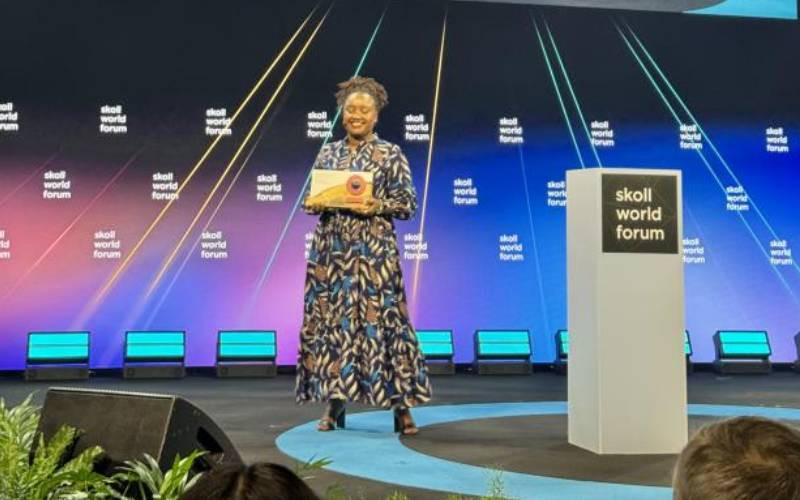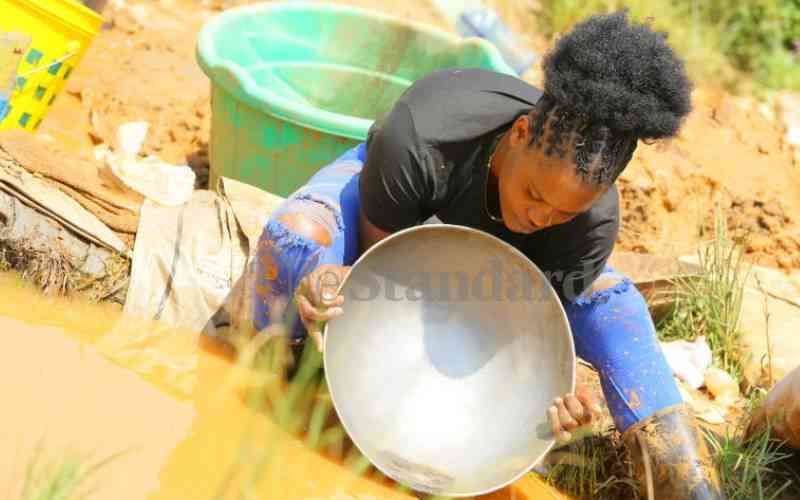
The stranglehold of manufacturing by micro and small enterprises has been linked to the sector's slow growth.
According to a report by a government think tank, the business environment for small enterprises does not favour them and the speed at which Kenya's manufacturing sector doesn't reflect the State's efforts to boost it.
The report by Kenya Institute for Public Policy Research and Analysis (Kippra) says that the hiving off of these businesses in the sector is counterproductive because they are the ones applying low or out-of-date technology, and have weak innovation systems and skills deficiency.
These businesses also struggle to access affordable finance, grapple with poor infrastructure and are worst hit when unprecedented events such as the Covid-19 pandemic strike.
These details are contained in the latest Kenya Economic Report 2022 released by Kippra and themed Building Resilience and Sustainable Economic Development in Kenya.
The report notes that manufacturing accounts for 47.7 per cent and 54.7 per cent of the formal industrial Gross Domestic Product(GDP) and employment respectively.
Poor performance
It also accounts for 95.5 per cent of enterprises, 96.2 per cent of jobs and 75.4 per cent of gross value added in informal industrial activities.
In 2020, manufacturing, as a result of the Covid-19 pandemic, contracted by 0.1 per cent but rebounded in 2021 with 6.9 per cent growth.
"Despite its potential to contribute to economic development, manufacturing contribution to national gross domestic product (GDP) remains below the 15 per cent target," the report reads in part.
"The sector faces significant downside risks, including droughts, election cycles, global recessions, and increases in global oil prices. Further, the resilience of manufacturing is weakened by a high concentration of informal micro and small enterprises (MSEs)."
An MSE is considered to be a small firm with less than 50 employees.
"Firm size has implications for business resilience through channels such as access to human and material resources, market diversification and access to lifeline infrastructure, including transport facilities and utilities such as electricity, water, telecommunication network and sanitation," the report says.
Kippra references a survey by the United Nations Industrial Development Organisation (UNIDO) on developing and emerging economies which reveals that MSEs were disproportionately affected by the Covid-19 pandemic when compared to large companies.
An example is given that large enterprises with over 100 employees reported a decline in sales of just two per cent as a result of the disruptions caused by the pandemic while their micro and small counterparts lost 19 to 29 per cent.
"The impact was more severe among the MSEs," Kippra says.
The challenge with these businesses also stretches to attracting the right skills to spur their growth. This stems from the data set that within formal manufacturing, MSEs account for 83.4 per cent of the 6,038 enterprises but only 30.1 per cent of jobs in the sector.
"This implies that majority of the manufacturing enterprises are owner-operated, with minimal scale to absorb jobs outside family labour," the policy think tank adds.
Some of the primary challenges being faced by MSEs in manufacturing have to do with the horizontal infrastructure that ideally, should be provided by the government as a way of incentivising them.
These are water, power, and roads. They may also stretch to waste disposal facilities and access to social amenities.
What next?
A 2016 Kippra report on the county business environment for MSEs in Kenya revealed these challenges and the latest report has referenced some of them.
"The 2016 MSME survey reveals that while 81.6 per cent of the manufacturing MSEs mostly operating within the informal sector report to have access to electricity, a lower proportion (74.0 per cent) report to be actually connected; the main constraints being high costs of electricity, perceived inefficiencies of electricity supply, and cumbersome connection processes," the report says.
The report lists several recommendations targeting MSEs, which if the government can implement them, may see manufacturing hit 15 per cent of GDP.
"Given that MSEs are disproportionately affected by shock and stressors, it is imperative to fast track implementation of the Sessional Paper No 5 of 2020 on MSEs Policy," Kippra recommends. This paper provides measures such as skills upgrading, infrastructure, financing, technology and innovation essential for building resilience.
Kippra also recommends incentivising manufacturing diversification into mainstream and high-technology activities through fiscal (incentives) and financing of research and development investments.
How to access raw materials is also another aspect of the sector that needs to be relooked at for its full potential to be met. Kippra notes in the report that 62 per cent of MSEs import raw materials compared to 71 per cent for medium and large enterprises.
"Implying that MSEs have more exposure to local shocks and stressors than medium and larger firms that are exposed to regional and global supply chain disruptions," the report says.
However, it notes that high-technology manufacturing is relatively dependent on imported materials compared to medium and low-technology manufacturing.
Under-developed value chain
It extrapolates further saying low technology manufacturing enterprises, only 30 per cent of expenditures on raw materials were on imports, compared to medium and high technology manufacturing at over 45 per cent.
"This means that local value chain is under-developed for high technology manufacturing," says Kippra.
"Consequently, high technology manufacturing in Kenya is expected to be vulnerable to external shocks that affect global supply chains of raw materials compared to low technology manufacturing that tends to source raw materials from domestic markets."
 The Standard Group Plc is a multi-media organization with investments in media platforms spanning newspaper print
operations, television, radio broadcasting, digital and online services. The Standard Group is recognized as a
leading multi-media house in Kenya with a key influence in matters of national and international interest.
The Standard Group Plc is a multi-media organization with investments in media platforms spanning newspaper print
operations, television, radio broadcasting, digital and online services. The Standard Group is recognized as a
leading multi-media house in Kenya with a key influence in matters of national and international interest.











